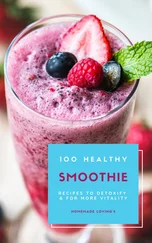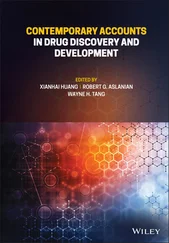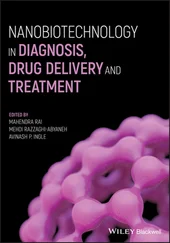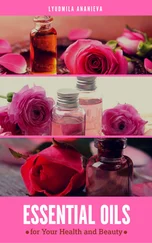1 COVER
2 TITLE PAGE OIL‐IN‐WATER NANOSIZED EMULSIONS FOR DRUG DELIVERY AND TARGETING TAMILVANAN SHUNMUGAPERUMAL Department of Pharmaceutics National Institute of Pharmaceutical Education and Research (NIPER) Guwahati, Assam, India
3 COPYRIGHT PAGE
4 LIST OF CONTRIBUTORS
5 FOREWORD
6 PREFACE
7 CHAPTER 1: INTRODUCTION: AN OVERVIEW OF NANOSIZED EMULSIONS 1.1. INTRODUCTION 1.2. CONCLUSION REFERENCES
8 CHAPTER 2: FORMULATION DEVELOPMENT OF OIL‐IN‐WATER NANOSIZED EMULSIONS 2.1. INTRODUCTION 2.2. FDA‐APPROVED OILS, EMULSIFIERS, AND AUXILIARY OR MISCELLANEOUS EXCIPIENTS 2.3. CURRENT AND NEAR FUTURE DIRECTION 2.4. LIPOPHILIC API INCORPORATION PATTERN INTO NANOSIZED EMULSIONS 2.5. QbD APPROACH TO OPTIMIZE EMULSION 2.6. CONCLUSION REFERENCES
9 CHAPTER 3: CHARACTERIZATION AND SAFETY ASSESSMENT OF OIL‐IN‐WATER NANOSIZED EMULSIONS 3.1. INTRODUCTION 3.2. PHYSICAL AND VISUAL EVALUATIONS 3.3. CHEMICAL AND BIOLOGICAL EVALUATIONS 3.4. SAFETY AND EFFICACY ASSESSMENTS 3.5. CONCLUSION REFERENCES
10 CHAPTER 4: MANUFACTURING AND POSITIONING (GENERATIONS) OF OIL‐IN‐WATER NANOSIZED EMULSIONS 4.1. INTRODUCTION 4.2. GENERATIONS OF O/W NANOSIZED EMULSIONS 4.3. PREPARATION METHODS FOR API‐FREE/LOADED O/W NANOSIZED EMULSIONS 4.4. CONCLUSION REFERENCES
11 CHAPTER 5: BIOFATE OF NANOSIZED EMULSIONS 5.1. INTRODUCTION 5.2. BIOFATE OF O/W NANOSIZED EMULSIONS 5.3. CLINICAL ISSUES OF FIRST‐GENERATION NANOSIZED EMULSIONS 5.4. CONCLUSION REFERENCES
12 CHAPTER 6: MEDICAL OR THERAPEUTICAL APPLICATIONS OF OIL‐IN‐WATER NANOSIZED EMULSIONS 6.1. INTRODUCTION 6.2. MEDICAL OR THERAPEUTICAL APPLICATIONS OF O/W NANOSIZED EMULSIONS 6.3. CONCLUSION REFERENCES
13 PART I: OVERVIEW OF TOCOL‐BASED EMULSIONS, OXYGEN‐CARRYING EMULSIONS, EMULSIONS WITH DOUBLE OR TRIPLE CARGOS AND EMULSION‐LIKE DISPERSIONS CHAPTER 7: OVERVIEW OF TOCOL‐BASED EMULSIONS, OXYGEN‐CARRYING EMULSIONS, EMULSIONS WITH DOUBLE OR TRIPLE CARGOS AND EMULSION‐LIKE DISPERSIONS CHAPTER 7.1: TOCOL‐BASED NANOSIZED EMULSIONS 7.1.1. INTRODUCTION 7.1.2. FORMULATION DEVELOPMENT USING TOCOL 7.1.3. NON‐ AND PRE‐CLINICAL SAFETY STUDIES 7.1.4. THERAPEUTIC APPLICATIONS 7.1.5. CONCLUSION REFERENCES CHAPTER 7.2: OXYGEN‐CARRYING EMULSIONS 7.2.1. INTRODUCTION 7.2.2. RATIONALE FOR SELECTING PERFLUOROCARBON FOR IN VIVO OXYGEN TRANSPORT 7.2.3. FORMULATION OF STABLE INJECTABLE PERFLUOROCARBON EMULSIONS 7.2.4. MULTIFUNCTIONAL PERFLUOROCARBON‐BASED EMULSIONS 7.2.5. GENERATIONS AND HURDLES OF PERFLUOROCARBON‐BASED NANOSIZED EMULSIONS AS OXYGEN CARRIERS 7.2.6. PROPOSED SOLUTIONS TO OVERCOME THE HURDLES OF PERFLUOROCARBON‐BASED NANOSIZED EMULSIONS USED AS OXYGEN CARRIERS 7.2.7. CONCLUSION REFERENCES CHAPTER 7.3: NANOSIZED EMULSIONS FOR MULTIPLE MEDICAMENT LOADINGS, IMAGING, AND THERANOSTIC PURPOSES 7.3.1. INTRODUCTION 7.3.2. BRIEF REVIEW OF RESEARCH REPORTS ON NANOSIZED EMULSIONS FOR IMAGING AND THERANOSTIC PURPOSE 7.3.3. VARIOUS TOPOLOGIES OBSERVED IN DISPERSED OIL DROPLETS OF THE EMULSIONS 7.3.4. POSSIBLE THERAPEUTIC UTILITY OF JANUS EMULSION 7.3.5. CONCLUSION REFERENCES CHAPTER 7.4: EMULSION‐LIKE DISPERSIONS 7.4.1. INTRODUCTION 7.4.2. FORMULATION OF EMULSION‐LIKE DISPERSIONS 7.4.3. CONCLUSION REFERENCES
14 PART II: SELECTED CASE STUDIES CHAPTER 8: SELECTED CASE STUDIES CHAPTER 8.1: CASE STUDY 1: CATIONIC NANOSIZED EMULSIONS: NARRATION OF COMMERCIAL SUCCESS 8.1.1. INTRODUCTION 8.1.2. SELECTION OF SUITABLE CATION‐CONFERRING AGENT 8.1.3. SELECTION OF SUITABLE PRESERVATIVE IF NEEDED 8.1.4. CLINICAL SAFETY ASSESSMENT 8.1.5. CONCLUSION REFERENCES CHAPTER 8.2: CASE STUDY 2: FISH OIL‐BASED NANOSIZED EMULSIONS 8.2.1. INTRODUCTION 8.2.2. IMPORTANCE OF FISH OIL OR FISH OIL SUPPLEMENTS IN EVERYDAY HUMAN LIFE 8.2.3. OVERVIEW ON ENVIRONMENT‐FRIENDLY GREEN‐EXTRACTION METHODS OF FISH OIL FROM WHOLE FISH OR FISHERIES WASTE 8.2.4. RATIONALE FOR DEVELOPING NANOSIZED EMULSIONS BASED ON FISH OIL 8.2.5. FISH OIL‐BASED EMULSION PRODUCTS: COMPARATIVE LITERATURE SURVEY 8.2.6. COMPLICATIONS OF FISH OIL AND FISH OIL‐BASED PRODUCTS 8.2.7. REGULATORY ASPECTS RELATED TO THE SAFETY OF FISH OIL/FISH OIL‐BASED PRODUCTS 8.2.8. THERAPEUTICAL APPLICATION OF FISH OIL OR FISH OIL‐BASED NANOSIZED EMULSIONS 8.2.9. CONCLUSION REFERENCES
15 INDEX
16 END USER LICENSE AGREEMENT
1 Chapter 1 TABLE 1.1. Typical Differences Between Grease Ball and Brick Dust Molecules TABLE 1.2. Typical Differences Between Microemulsion and Oil‐in‐Water Nanosized E...
2 Chapter 2 TABLE 2.1. Comprehensive and Non‐exhaustive List of Different Conventional or Tra... TABLE 2.2. Risk Estimation Matrix (REM) for Qualitative Analysis of Risk Construc... TABLE 2.3. Summary of Failure Mode and Effect Analysis (FMEA) Demonstrating Risk ... TABLE 2.4. Selective List of Various Designs Used for Optimization and Screening ... TABLE 2.5. Taguchi Design Matrix Portraying the Layout of Various Experimental Ru... TABLE 2.6. Independent and Dependent (Response) Variables: Face‐Centered Central ... TABLE 2.7. Low and High Levels of Critical Material Attributes (CMAs) and Critica... TABLE 2.8. Estimated Coded and Actual Model Equations Along with ANOVA of Regress...
3 Chapter 3 TABLE 3.1. Different Types of Emulsions Along with Their Compositions TABLE 3.2. Creaming Index Values Observed for Different Emulsions Over the Period... TABLE 3.3. Stability Testing Protocol as per ICH Guidelines TABLE 3.4. Peak Area and UHPLC Chromatogram of Cyclosporin A (CsA) and Its Possib... TABLE 3.5. Peak Area and UHPLC Chromatograms Obtained with the Treated Cyclospori... TABLE 3.6. Non‐exhaustive List of Various Factors Influencing the Mean Particle S...TABLE 3.7. List of Various Factors Influencing the Zeta Potential Value of O/W Na...TABLE 3.8. Drug Entrapment Efficiency (DEE) % and Acetazolamide (ACZM) Amount (%)...TABLE 3.9. Drug Entrapment Efficiency (DEE) % and Celecoxib (CXB) Amount (%) at O...TABLE 3.10. In Vitro Release Characteristics of Celecoxib (CXB) Through Cellulose...TABLE 3.11. Celecoxib (CXB) Release Rates Assessed by Two Different Model Equatio...TABLE 3.12. Comparison of Acetazolamide (ACZM) Formulations in Terms of % Permeat...TABLE 3.13. Different Parameters Investigated So Far to Assess the Safety Aspects...TABLE 3.14. Nonanimal Test Alternatives to Draize Eye Test for Classification and...TABLE 3.15. Schirmer I and Tear Break‐Up‐Time (TBUT) Test Values Obtained at 4‐ a...TABLE 3.16. The Cytotoxicity Assay of the α‐Tocopherol‐Loaded and Unloaded O/W Na...TABLE 3.17. Scoring Chart for Modified Hen’s Egg Chorioallantoic Membrane (HET‐CA...TABLE 3.18. Scores Obtained by Various Test Formulations in Modified Hen’s Egg Ch...TABLE 3.19. Physicochemical Characteristics of Azithromycin (AZM)‐Loaded Anionic,...
4 Chapter 4TABLE 4.1. Non‐Exhaustive or Selected List of Marketed Medical and Nonmedical Emu...TABLE 4.2. Selected List of Fatty Acids Used in Parenteral Lipid Emulsions (First...TABLE 4.3. Influence of Dependent and Independent Variables of Both Second‐ and T...TABLE 4.4. Steps Involved for Cancer Management Along with the Research Reported ...TABLE 4.5. Imaging Techniques for Diagnosis of CancerTABLE 4.6. Typical Formula to Make Oil‐in‐Water (O/W) Anionic and Cationic Nanosi...
5 Chapter 5TABLE 5.1. Volume Percentage of Various Plasma Proteins Adsorbed onto the Surface...
6 Chapter 7-1TABLE 7.1.1. Commercial Products for Parenteral Administration that Contain Vitam...
7 Chapter 7-2TABLE 7.2.1. Characteristics of Perfluorocarbon (PFC) Emulsions Related to the Di...TABLE 7.2.2. Selected Commercial Examples of Perfluorocarbon (PFC)‐Based Emulsion...
8 Chapter 7-3TABLE 7.3.1. Non‐comprehensive List of Oil‐in‐Water Nanosized Emulsions Used in I...
9 Chapter 7-4TABLE 7.4.1. Composition of Oil‐Less EmulsionTABLE 7.4.2. Application of Aqueous Two‐Phase Systems (ATPS)TABLE 7.4.3. ATPS Types Along with Composition
Читать дальше












